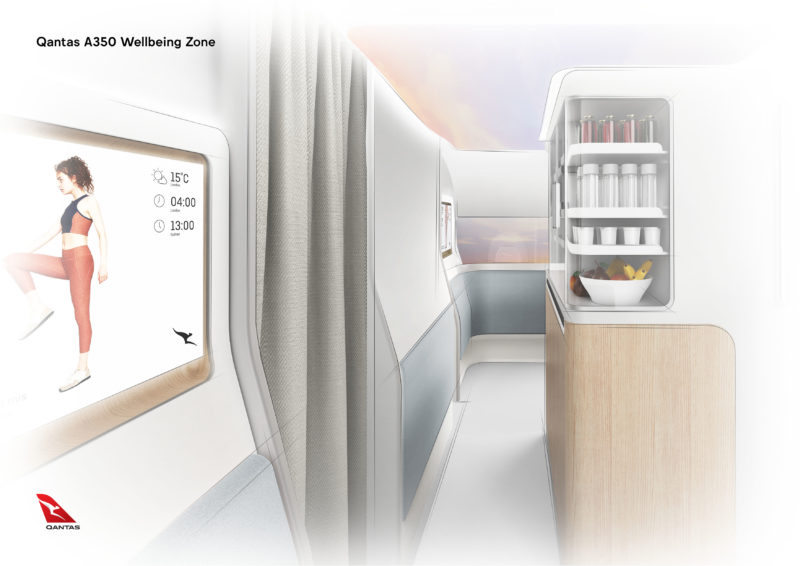Qantas has today announced a major aircraft order, while confirming the much-anticipated Project Sunrise. A firm 52 Airbus orders, with an additional 94 purchase rights, is among the largest in the Australian national carrier’s history.
Project Sunrise confirmed – with a special addition
There was already extensive speculation over an imminent announcement after the Qantas board convened last Thursday, and today’s confirmation aligned with the early-morning Sydney arrival of Airbus’ demonstrater A350-100XLR – a glimpse of the twelve aircraft ordered.
Beginning in late 2025, Project Sunrise flights will commence, initially from Sydney, to New York, London and other European destinations. Commenting on the announcement, CEO Alan Joyce described the flights as the “final fix for the tyranny of distance,” slashing journey times by 3-4 hours, and becoming the longest commercial flights in the world.
Deliveries will begin in 2025 and be complete by 2028.
Starting from a cool $356 million – though a significant discount from the standard price should be assumed – the airline’s A350-1000 aircraft will be powered by Rolls-Royce Trent XWB-97 turbofan engines which are 25% more fuel-efficient than previous generation aircraft.
The new A350s will carry 238 passengers across four classes (First, Business, Premium Economy, Economy), with more than 40 per cent of the cabin dedicated to premium seating. While the low density is unusual compared to Qantas’ competitors – who often seat 300 passengers in the same airframe – the flight times will extend beyond 20 hours. The airline will not lose out on a light density with likely pricey tickets and full flights.

The Qantas A350 cabin
“As you’d expect, the cabin is being specially designed for maximum comfort in all classes for long-haul flying.”
Alan Joyce, CEO, Qantas
With the decline of the A380 and large, four-engined aircraft and their spacious First Class cabins, the addition of First suites to the A350s will be appreciated by premium travellers. See a full seat tour here.

Each suite boasts an impressive configuration, featuring stylish wooden privacy walls and closing doors (a far cry from Qantas’ open and exposed A380 First product). The bed and seat are separate, allowing passengers to sleep at intervals of their choosing across ultra-long-haul flights. An enormous 32″ IFE screen extends from wall to wall, while 3-4 windows will be concealed by an expansive blockout blind. A private wardrobe and dedicated shoe storage will be welcome additions.

The seat will be controlled from a centralised iPad-style console, avoiding the cumbersome control buttons that plague the airline’s existing First product. Storage will be plentiful, and power outlets (including the all-important USB-C) will be plentiful. For the first time, passengers can customise their temperature and humidity levels within their suite.
Other seating is yet to be revealed, but it is safe to assume the Business seat will be similar to the airline’s current product that features in the Airbus A330, refurbished A380, and B787 Dreamliners. Renders from the airline also appear to show a similar design to the current seating product.
A ‘Wellbeing Zone’ will also be a welcome addition for passengers onboard Project Sunrise flights. During earlier trials in 2019, utilising B787s, the consistent themes of exercise, in conjunction with research from the University of Sydney, indicated that wellbeing will be an important hurdle for Qantas.

The area will feature a health-conscious refreshment station, as well as a large area to exercise with guided videos.

Domestic fleet renewal
While 12 aircraft orders may seem large, it is dwarfed by the enormous renewal of Qantas’ narrow body jets as part of Project Winton with firm orders for 20 Airbus A321XLRs and 20 A220-300s as its Boeing 737s and 717s are gradually retired. The first of these aircraft will start to arrive in late calendar 2023, with the order including purchase right options for another 94 aircraft for delivery through to at least 2034.
The new A321XLR will be configured to seat 200 people (20 business, 180 economy) – a 15% increase over the outgoing B737s with no reduction in space between seats. It can fly approximately 3,000km further than the 737 (at 8,700km) and opens up a wider range of direct domestic and short-haul international routes, including the Pacific Islands and South East Asia.
Similarly, the A220-300 – of which a demonstrator aircraft arrived on Saturday, according to airline sources – will 137 people. Carrying 25% more passengers than the ageing B717s, the A220 has almost double the range at over 6,000 kilometres, meaning it can fly between any city in Australia. Consequently, CEO Alan Joyce suggests the “range and economics [of both aircraft] will make new direct routes possible, including serving regional cities better.”
On a per-seat basis, the A220-300 burns 28 percent less fuel per passenger than the B717, while the A321XLR burns 17 percent less fuel per passenger compared with the B737. Both, however, will be significantly quieter (up to 50%).
“The A320s and A220s will become the backbone of our domestic fleet for the next 20 years, helping to keep this country moving.”
Alan Joyce, CEO, Qantas




